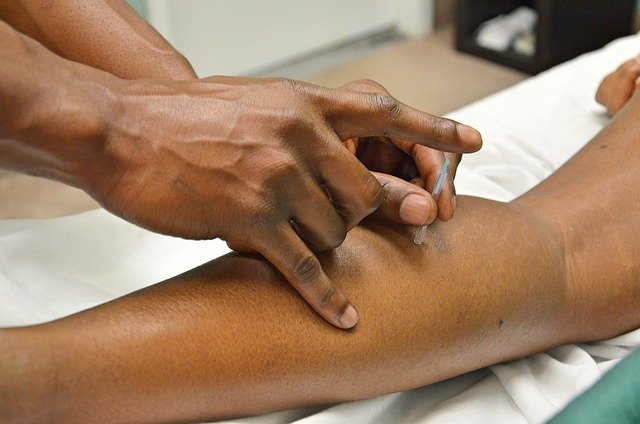Discover the Life-Changing Benefits of Massages for Everyday Wellness in 2025
In today's fast-paced world, understanding the benefits of massages for everyday wellness is more important than ever. Regular massage therapy enhances physical health by improving circulation, reducing muscle tension, and managing pain effectively. Beyond the physical, it plays a vital role in mental wellness by alleviating stress and promoting better sleep quality.

Massage therapy has evolved significantly over the years, becoming an integral component of holistic health practices worldwide. In 2025, as our understanding of the mind-body connection deepens, massage continues to demonstrate remarkable benefits for overall wellness. Beyond mere relaxation, regular massage therapy sessions can address numerous health concerns and enhance quality of life in meaningful ways. Let’s explore how incorporating massage into your routine can lead to transformative wellness benefits in today’s fast-paced world.
Improving Physical Health Through Regular Massage
The physical benefits of massage extend far beyond temporary comfort. Regular massage therapy promotes improved circulation, which helps deliver oxygen and nutrients to tissues throughout the body while facilitating the removal of metabolic waste. This enhanced blood flow contributes to faster healing of injured muscles and reduction of inflammation. Massage also improves posture by releasing tension in overworked muscles that may pull the body out of alignment. Additionally, it enhances flexibility and range of motion by stretching muscle fibers and stimulating the production of natural lubricants between connective tissues.
In 2025, technological advancements have allowed therapists to target physical improvements with greater precision. Specialized techniques now address specific physical concerns, from athletic performance enhancement to recovery from repetitive strain injuries. Studies have shown that consistent massage therapy can help strengthen the immune system by increasing the activity of white blood cells that help the body fight disease, making it a valuable component of preventative healthcare.
Massage for Pain Management: A Natural Approach
Chronic pain affects millions globally, and massage offers a non-pharmaceutical approach to managing various pain conditions. Massage therapy works by reducing muscle tension, decreasing nerve compression, and releasing endorphins—the body’s natural painkillers. For those suffering from conditions like fibromyalgia, arthritis, or lower back pain, regular massage sessions can provide significant relief and improved functionality.
The targeted pressure applied during massage helps break up adhesions (bands of painful, rigid tissue) in muscles and connective tissues. This process, known as myofascial release, can dramatically reduce pain associated with these adhesions. Massage also stimulates the parasympathetic nervous system, which helps counteract the stress response that often amplifies pain perception. In 2025, personalized pain management protocols combining different massage techniques have become standard practice, offering customized relief based on individual pain patterns and responses.
Stress Relief and Mental Wellness Through Therapeutic Touch
In our hyperconnected world, stress has become a constant companion for many. Massage therapy offers a powerful antidote by triggering numerous physiological responses that counteract stress. During a massage, levels of cortisol (the primary stress hormone) decrease while serotonin and dopamine (feel-good neurotransmitters) increase. This biochemical shift creates feelings of calm and well-being that extend beyond the massage session itself.
Regular massage has been linked to reduced symptoms of anxiety and depression, conditions that continue to rise globally. The human connection aspect of massage—the therapeutic touch—provides comfort that digital wellness solutions cannot replicate. In 2025, massage therapy is increasingly prescribed as part of mental health treatment plans, with insurance providers recognizing its efficacy for psychological wellness. The integration of mindfulness techniques with massage has further enhanced its mental health benefits, creating powerful tools for emotional regulation and psychological resilience.
Massage for Better Sleep: Enhancing Rest in a Restless World
Sleep disorders affect approximately 70 million Americans, with similar proportions worldwide. Massage therapy addresses this epidemic by promoting relaxation and addressing the underlying causes of poor sleep. By reducing stress hormones and muscle tension, massage creates ideal conditions for quality rest. The increase in serotonin during massage also benefits sleep, as this neurotransmitter is a precursor to melatonin—the hormone responsible for regulating sleep cycles.
Studies have shown that regular massage can help increase deep sleep, the most physically restorative sleep phase. People who receive massage report falling asleep more easily and experiencing fewer sleep disturbances throughout the night. In 2025, specialized pre-bedtime massage protocols have become popular additions to sleep hygiene practices. These targeted techniques focus on reducing nervous system activity and preparing the body for optimal rest, making massage a valuable non-pharmaceutical intervention for insomnia and other sleep disorders.
Holistic Wellness Through Massage: Integrating Body and Mind
The holistic benefits of massage extend beyond specific physical or mental health improvements. Regular massage therapy promotes body awareness—the conscious connection to physical sensations that often gets lost in our digitally distracted world. This heightened awareness allows individuals to recognize tension patterns earlier and address potential health issues before they become problematic.
Massage also supports the body’s natural detoxification processes by stimulating lymphatic flow, which helps remove cellular waste and environmental toxins. This cleansing effect contributes to improved energy levels and overall vitality. In 2025, holistic wellness approaches increasingly recognize massage as a cornerstone practice that bridges physical and mental health. The integration of massage with other complementary practices like nutritional counseling, movement therapy, and mindfulness training creates comprehensive wellness protocols that address health from multiple angles.
Cost Considerations for Massage Therapy in 2025
Understanding the financial aspects of incorporating massage into your wellness routine is important for sustainable practice. The cost of massage therapy varies depending on several factors including location, therapist experience, setting, and technique specialization.
| Massage Type | Average Session Cost | Typical Session Length | Recommended Frequency |
|---|---|---|---|
| Swedish Massage | $80-120 | 60 minutes | 1-2 times monthly |
| Deep Tissue | $90-150 | 60-90 minutes | 2-4 times monthly |
| Sports Massage | $100-165 | 60-90 minutes | Weekly for athletes |
| Hot Stone | $115-180 | 75-90 minutes | 1-2 times monthly |
| Thai Massage | $90-150 | 60-90 minutes | 2-4 times monthly |
| Prenatal Massage | $85-125 | 60 minutes | 2-4 times monthly |
Prices, rates, or cost estimates mentioned in this article are based on the latest available information but may change over time. Independent research is advised before making financial decisions.
Many health insurance plans now offer coverage or discounts for massage therapy when prescribed by a healthcare provider, particularly for specific medical conditions. Additionally, wellness packages at spas and massage centers often provide reduced rates for regular clients. Some employers have also begun including massage therapy in their wellness benefits, recognizing its impact on employee health and productivity.
The Future of Massage Therapy
As we move through 2025, massage therapy continues to evolve with technological innovations and deeper scientific understanding. Advances in wearable technology now allow therapists to measure physiological responses during sessions, enabling more personalized and effective treatments. Virtual reality integration has created immersive environments that enhance the relaxation benefits of massage, while AI-powered assessment tools help therapists identify tension patterns with greater precision.
Despite these technological advances, the fundamental healing power of human touch remains irreplaceable. The therapeutic relationship between client and massage therapist continues to be central to the effectiveness of massage therapy. As our world becomes increasingly digital, the value of intentional, healing touch has only grown more significant in maintaining our connection to our physical selves and supporting comprehensive wellness.
This article is for informational purposes only and should not be considered medical advice. Please consult a qualified healthcare professional for personalized guidance and treatment.




